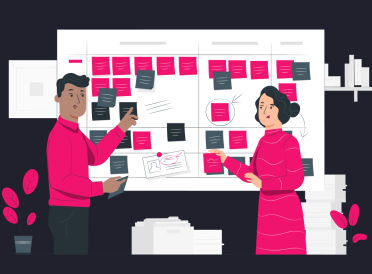Drupal 7, come in, your time is up!
From January 2025, this version of the popular enterprise content management system (CMS) will no longer be officially supported, and sites running Drupal 7 need to upgrade right away to ensure that their sites continue to run well.
If you haven't already started your upgrade, you should act now. What you need to do, and how long it might take, will vary depending on a number of factors, but with careful planning a Drupal 7 upgrade can deliver significant benefits for your organisation.
Below, we'll explain what you should consider when upgrading, and how to make the process simple, successful, and smooth.
Background
Drupal version 7 was first released in 2011, and since then hundreds of thousands of websites have been created with it. It is easy to integrate into your business, is fast and secure, and its reporting and data management tools are flexible and easy to use. It empowers teams to focus on their goals, not battle against technology.
Since 2011, three new versions of Drupal have been released, each better than the last. The latest, Drupal 10, offers big improvements in user experience, design, security and interoperability, making it a powerful part of any business ecosystem.
Key reasons to upgrade
For your organisation
- Better front-end theming using Twig templating rather than PHPTemplate
- Large improvements in configuration management which make deployment simpler
- Vastly improved content authoring experience, with an entirely new admin theme, and best-in-class tools such as CKEditor built into the core
For your users
- Better performance and scalability with built-in caching, improved APIs, and much better out-of-the-box optimisations
- Security has always been strong, but Drupal 7 is now showing its age and will be a security risk when updates finally stop in January 2025 . Drupal 10 benefits from the latest security features and continuous updates
For your technical team
- Modern Drupal is built using dependency management tools such as Composer which make upgrading more reliable and speedy
- Uses Symfony 6 for improved request handling, higher performance
- Object-oriented rather than procedural PHP makes the developer experience significantly better, reducing wasted time and cost for your business
"We want it the same. But better"
When technology changes, it can feel like you're being forced into an upgrade that you don't want or need. "I just want it to work the same way it does now" is a common refrain from teams, and it can feel frustrating to spend money on a project that just gives you what you already have.
So rather than simply replacing like-for-like, you could seize this as an opportunity to improve what you love, replace what you hate, and learn from your competitors. As the saying goes "if you're not moving forwards, you're going backwards" and an "enforced change" can be a chance to take an objective look at your customers, your competition, and how your organisation stacks up.
You should review your design to see if it is up to date and compliant with accessibility standards such as the EEA. Consider your content - is it still relevant to your audience and what you do for them?
And of course, as well as upgrading to keep your site running securely and with better performance, think about the key feature improvements in Drupal 10 that you could take advantage of:
- Improved workflow tools for editors. These can help you to manage your content approvals more effectively
- Much better editorial experience built-in, with tools such as Layout Builder and Mercury Editor giving you full-page what-you-see-is-what-you-get (WYSIWYG) editing
- Integration with newer applications for marketing automation, personalisation, e-commerce and CRM
- Better security, with easily-enabled Two Factor Authentication and SSO
- Headless options to allow you to build a front-end interface in modern frameworks such as React or Vue
- Access to high-performance hosting options that won't support Drupal 7
Steps to a successful Drupal 7 to Drupal 10 upgrade
Assign a project team and get management buy-in
Upgrading from Drupal 7 - a web content management system released in 2011! - is not just a one-click process, and you should treat the upgrade as a project. Assign a team to work on the upgrade, and if the website is vital to your organisation (and whose isn't?), you should also make sure that you have buy-in from any key stakeholders. With careful planning, this will go smoothly, but the project will take time and money.
Consider your upgrade options and method
- Define your goals. Is this just a technology upgrade, or do you want to take the opportunity to review everything?
- What is working well about your current website or application, and what can be improved? Newer versions of Drupal bring advances in technology, design, accessibility, and search engine optimisation, and you should consider taking advantage of these
- What content do you want to keep?
- What is your data telling you? Review your analytics, SEO and PPC information to identify areas toretain or improve
- How much time do you have?
- What budget can you allocate to the project, including finances, time, and people
- Are you sticking with Drupal? It's a powerful, flexible digital experience platform, but it's not right for every project and every team, and you should check if it still fits the bill
- How will you host and support the site? Is your existing supplier supporting you as you would want?
- Choose the right upgrade path. Is this a rebuild directly onto Drupal 10, to give you a clean slate, or will you follow a Drupal 7 to 10 upgrade path? The choice here will depend how many bespoke features you have, and how much content there is to migrate

How long will it take?
Before I answer fully, please let me see your piece of string… but generally a website upgrade will take several months or longer. If you rush your upgrade, you are likely to miss out on some of the benefits listed above or make mistakes that cost more time and money.
Give yourself as much time as possible, and if need be reduce the scope of the migration and release in phases. Focus on the core Drupal 10 upgrade to begin with, and then add new features after the initial launch of your updated site.
Getting started
Once you've decided that you want to upgrade, and what you want to upgrade, you should follow these steps:
- Using the research you undertook in your audit, gather details about the content, key pages, and features that you want to keep or create in the new site
- Create a task list and project plan, and ask your team to estimate the time needed for each task
- If you have a complex site or are approaching Drupal 7 'end of life' date, consider what a 'minimum' release might look like to help you hit the deadline. Modern web technology encourages regular incremental improvements, so there's no need to have everything 'finished' before you launch
- Get building! Typically this involves creating a new Drupal 10 website, and either automatically or manually bringing in the content, design and features you need. This can be a highly iterative process, so make sure you're using a sensible project methodology such as Agile, good code and design tools, and have a team that knows what they're doing
- Plan out your launch strategy. Will there be downtime? Will there be an SEO impact? If you're creating or moving content, you should put in place a strategy to retain any search engine value, and ensure that you are carefully tracking impact of the new site
- Test thoroughly, including performance, security and accessibility testing
- Launch and win!
- Continue with your phased approach, and keep making improvements
Want help? We've got you covered with our seamless Drupal 7 upgrade process
1. Free Consultation and high-level budgeting
We start with some information gathering. This includes a discussion with you to understand your current situation and future goals, and a review of your existing website, ideally including access to your Drupal administration tools and hosting environment so we know what you are contending with.
We move quickly, and the outcome of this will be a guide budget for the upgrade, and clear next steps that you can use to get stakeholder buy-in for the project. More detailed budgets will come after the next step.
2. Detailed planning
We'll have further discussions with you. Depending on the route you want to take and how much time is available before launch date, this phase could include additional user, content, SEO, and design research and ideation. A full technical audit will identify feature, performance, security, and integration requirements and give us a clear picture of the opportunities, risks, likely costs and timings for the upgrade.
The outcome here will be a detailed plan with more focused costs, usually including options for later phases.
3. Expert migration
"The easy bit". Our team of Drupal experts handles the entire migration process, ensuring a smooth transition to Drupal 10. Your dedicated project team will ensure that you have visibility and control at every stage, so that you can manage your stakeholders and your own tasks.
We rigorously test your upgraded site to make sure it all works as expected.
4. New content entry and user acceptance testing
If you're taking the opportunity to improve content, design, or user journeys, then we will allow time in the schedule for you to do that now. We can help, but this is usually a great opportunity for you to get to know your new Drupal website by editing the content and adding any new on-brand imagery that we planned for in the earlier stages.
You'll also have the opportunity to test everything thoroughly, and between your team and ours, we will prepare a detailed launch plan so that everything goes smoothly on the big day.
5. Post-upgrade support and enhancements
After the celebration and champagne-headaches have faded, it is time to consider "what next?". Whether you have finishing touches to make, or you just want to keep on improving lead generation and conversion from your site, our team can support you. Our expert digital marketing, technical teams, and conversion rate optimisation teams can help you reach the right audiences, and our search performance and analytics team will keep your stakeholders happy with regular, actionable insights and value-focused reports.
Versantus were innovative and knowledgeable when faced with our requirements and we are really pleased with the results
Elizabeth Indaco, University of Oxford Physics Dept

